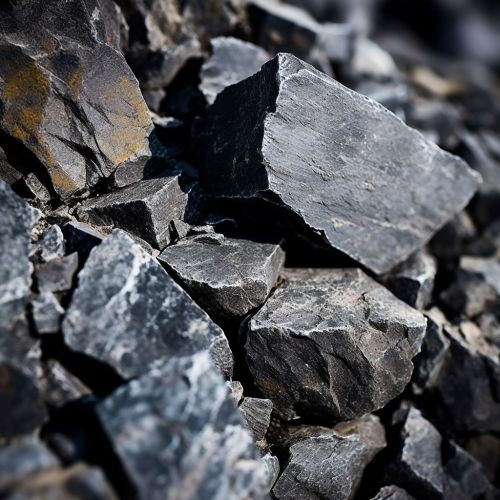Andesite
Introduction
Andesite is an extrusive igneous rock named after the Andes Mountains where it is very abundant. It is characterized by its intermediate composition, being neither mafic nor felsic. Its mineral assembly is typically dominated by plagioclase plus pyroxene and/or hornblende. Andesite is the volcanic equivalent of plutonic diorite.

Formation
Andesite forms when a magma, with an intermediate composition, erupts onto the Earth's surface. This typically occurs at convergent plate boundaries, where an oceanic plate is subducting beneath a continental plate. The subducting plate carries water-rich sediments into the mantle, lowering the melting point and causing partial melting of the mantle above the subducting plate. This generates a magma that is less dense than the surrounding rock and rises to the surface, where it erupts to form andesite.
Composition
Andesite is an intermediate rock, meaning its silica (SiO2) content is between that of mafic basalt and felsic rhyolite. It typically contains 52% to 63% silica. The remainder is mostly made up of aluminium, iron, magnesium, calcium, sodium, and potassium oxides, along with trace amounts of other elements. The most common minerals found in andesite are plagioclase feldspar, pyroxene, and hornblende. Some andesites may also contain quartz, biotite, or olivine.
Texture
Andesite is a fine-grained rock, with mineral grains typically less than 1mm in size. This is due to the rapid cooling of the magma when it erupts onto the surface, which prevents large crystals from forming. However, some andesites may contain larger mineral grains, or phenocrysts, surrounded by a fine-grained matrix. This texture is known as porphyritic.
Types of Andesite
There are several types of andesite, classified based on their mineral content. These include hornblende andesite, biotite andesite, and pyroxene andesite. Hornblende andesite is rich in the mineral hornblende, while biotite andesite contains significant amounts of the mica mineral biotite. Pyroxene andesite is characterized by the presence of the mineral pyroxene.
Distribution
Andesite is found in many parts of the world, but is particularly abundant in the Andes Mountains of South America, from which it gets its name. It is also common in the Cascade Range of the Pacific Northwest, the Aleutian Islands of Alaska, and the Kamchatka Peninsula in Russia. Other notable locations include the islands of Indonesia and the Philippines, Japan, New Zealand, and the Mediterranean.
Uses
Andesite has a variety of uses, primarily due to its durability and resistance to weathering. It is often used as a building material, in the form of dimension stone or aggregate for concrete. It is also used in the production of stone tools and as a source of various minerals.
